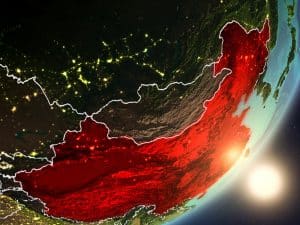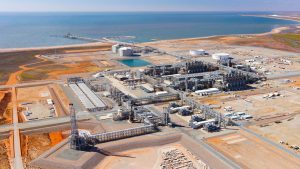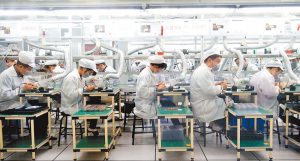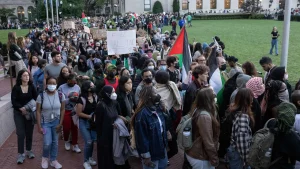China has become a prominent actor in the global economy. The extraordinary growth of its GDP in the past 20 years, combined with its impressive accumulation of manufacturing power, has dramatically changed the equation of global trade. China’s heavily export-oriented model is, however, not free of contradictions. The country’s low wages—although increasing drastically—mean low aggregate domestic demand, and thus the dependency on foreign market. The Chinese government has crafted a new plan to break this cycle by trying to increase domestic demand and to export excess capital, but the results of this plan are yet to be seen.
Left Voice’s Juan Ferre discussed these issues with Au Loong Yu, a Hong Kong-based labor scholar and a longtime political activist. He is the author of China’s Rise: Strength and Fragilities and many articles on Chinese politics and economy.
Juan Ferre: The U.S. government has repeatedly threatened China with a trade war and has implemented tariffs on Chinese products. What impact has this had?
Au Loong Yu: Since the trade war has just begun, it is difficult to evaluate its full impact, although the affected sectors now see the damage. There are already reports about ships carrying U.S. soybeans roaming in the open sea because they can no longer sell the products to their Chinese importers, thanks to the rising U.S. tariffs. The mayor of Los Angeles has warned that the trade war may result in a 20% drop in trade volumes. However, we in Hong Kong are enjoying cheap cherries from the United States, since these products have been diverted to Hong Kong after Trump’s declaration of the trade war.
While Trump chiefly targets China’s industrial and technological products, China mainly targets the United States’ agricultural products. Since the two sides are escalating the war, previously unaffected products are now suddenly falling onto the list for retaliation. Previously, for instance, Apple was not affected by Trump’s list of targets. But the latest list now includes Chinese semiconductors, and so in the end Apple may be affected, even if the iPhone remains unaffected.
Considering the size of the trade war, it will be quite scary if Trump continues to implement his plan. It reminds us of the United States’ escalation of tariffs in 1930, which triggered a tariff war and in turn made world trade shrink by more than 60%. The rest of the story is common knowledge. Although we are always skeptical of so-called free trade, replacing it with a trade war like this is even more problematic.
But a far-right populist such as Trump is unpredictable. He may change course later. Surely there is also a fair chance that he may not. On top of this is the fact that he has multiple intentions and goals and it is unclear which is his top priority.
Trump’s administration may have two aims: To drastically cut the trade deficit and to block the Made in China 2025 strategy [to increase substantially de production of high-tech commodities]. The former aim is hard to achieve if the United States remains a country with very low savings. Even if Trump succeeds in cutting the deficit with China, it only means other countries will move in to fill the gap and the trade deficit will remain. Saving jobs is an even harder goal to achieve. When trade shrinks, the first thing to go will be jobs. Perhaps in the end jobs are not Trump’s priority at all. Trump is clear about bringing down China’s plan to further modernize its technology. But using such an all-out general offensive such as a trade war to achieve such a specific target may be a wasteful means of attack. Not long ago, Trump’s direct crack down on ZTE Corporation proved much more effective.
If they launch a trade war against each other, it is like a two-headed snake fighting itself: Neither head can hide from the other side’s attack.
Perhaps Trump favors a high-profile and grand attack. Yet this kind of trade war is going to hurt both sides. Some time ago, Handel Jones wrote a book entitled Chinamerica to depict the close economic relations between the two countries. If they launch a trade war against each other, it is like a two-headed snake fighting itself: Neither head can hide from the other side’s attack. GM cars, for instance, sold more in China than in the United States. According to a 2015 JP Morgan report, technology companies on the S&P 500, particularly component makers, heavily depend on China for their revenue.
What is more dangerous is the nationalism and xenophobia trumped up by Trump. Trump makes a big fuss over the trade deficit with China. It is laughable to talk about “national economy” now without heavy qualification. In actuality, half of China’s exports come from foreign companies investing in China. A trade war of this scale is going to hurt a lot of Western companies as well. Twenty-first-century capitalism has not only a global market but also a global assembly line, at least for many goods. Whereas before a telephone was made domestically, wholly in a national economy, nowadays an iPhone is not made in China but assembled there. According to one report, an iPhone that is assembled in China and costs US$179 actually consists of US$172 of components imported from outside China.
In actuality, half of China’s exports come from foreign companies investing in China. A trade war of this scale is going to hurt a lot of Western companies as well.
What is going to happen depends largely on what Trump most wants. There are reports about differences within the White House. While U.S. Treasury Secretary Steven Mnuchin seeks to cut the trade deficit with China, the hawkish trade representative, Robert Lighthizer, wants a structural policy change on the side of China. This confusion surely adds to the great uncertainties that both countries and the whole world now face.
If in the end stopping China’s rise is the priority, then it is a historic rupture with previous U.S. China policy, and surely even more scary, although from this perspective the trade war may make sense—to ignite a huge economic crisis in China.
In recent decades, China has struggled to foster a domestic market and, thereby, reduce its dependency on exports. Has there been any progress so far in this regard? And how does this rebalancing effort relate to the piling up of debt?
The Chinese stock market’s sharp fall in 2015 could have triggered an economic crisis had the state failed to come to its rescue, again (the last huge rescue was during the 2008-9 crisis). Yet the basic problems of these crises have not been fixed at all. We mean the long-term economic imbalances brought about by the particular growth strategy of devoting an incredibly high portion of national income to capital investment while suppressing consumption. If we look at the share of final consumption in China’s GDP, it is now a bit higher than in previous years following the government’s attempt to stimulate domestic demand, but it still stood at only 39% in 2016.
This is not only much lower than the world average (and much lower than low-income countries), but is also significantly lower than its own previous record of 48% back in 1960. Hence, China suffers from a typical economic imbalance of overaccumulation and overproduction. More than 10 years ago, government officials already frankly admitted that this was compelling them to seek overseas investment to solve such an imbalance.
As for exports, according to a World Bank report in 2018, the contribution of net exports to GDP growth was negative in both 2015 and 2016. In 2017, it turned positive but still only reached 0.6% while real GDP growth was 6.7%. Its projection for this and the next year is 0.1%, and it is 0% for 2020. With the trade war now underway, one may doubt if the projection needs even more downward adjustment. With net exports declining, so is trade surplus.
But there is no efficient income-generating engine to replace the falling contribution from net exports.
GDP growth is now only half of what it was a dozen years ago. And GDP growth itself might be deceptive because it records all investment, yet not all investment will generate income in the end amid general overaccumulation. The ghost town is a typical example of ineffective investment, which in the end only brings in more debt that cannot be paid without government bailouts. This has resulted in ever-growing total debt. The situation is becoming more dangerous.
The IMF published a report in December 2017 and identified three “major tensions” in China’s financial system that could derail the economy, and debt is one of them. This was followed by a report from the Bank of International Settlements in March warning that China’s debt now surpasses an amount that could lead to a system fallout.
It put China’s total debt at 256% of GDP. This is comparable to developed countries but exceptionally high for a developing country like China. Also, the structure of debt is different because China’s debt is mostly owed by state-owned enterprises and local government. The upside is that foreign debt remains small, although one must immediately add that there are always hidden foreign debts, and no one knows how much it is until the crisis breaks out.
China’s bureaucratic capitalism necessarily carries with it a global expansionist logic, firstly in economic terms and then increasingly also in political and military terms.
Other sources put the total debt as high as 342%. This seems to include debts between banks, while the former figure excludes them. Also, if one factors in the deficit in the social security fund, then it makes the total sum of debts bigger. The strong state control does allow the party to contain sharp crisis by throwing money from helicopters, but this only lays the ground for more debt, and debt must be paid in the end. When the time of reckoning comes, the party state will have to once again dispossess even more people to find money for the debt. But the inconvenient fact is that this also serves the purpose of further antagonizing the people who today are still largely apolitical.
In your book China’s Rise: Strength and Fragility, you give an account of the impressive growth of Chinese transnational corporations up to 2007. In the 10 years since, the pace of Chinese foreign investment in Latin America, in Africa and elsewhere has increased even more. Can we speak of China as a new imperialism? If so, does it have specific characteristics? How does the One Belt One Road initiative fit into this project?
When China became the second-largest source of outbound FDI in the world in 2016, this also meant that China had significant overseas interests to defend, particularly so since its investment emphasis was on infrastructure, which takes a long time to generate profits.
To achieve the goal, the government necessarily ignores its officially stated policy of noninterference in other countries’ internal affairs so that it can effectively promote its share in the world market while raising its status in the global value chain. The increasing tension between the United States and China while the latter is emerging as a major global power must also be considered. This tension compels China to strengthen its ties with other countries, especially its neighbors, hence the BRI (Brazil, Russia and India). Surely, the narrowing of the domestic market and the excess of idle capital also compels the bureaucracy to export capital through the BRI projects.
China’s bureaucratic capitalism necessarily carries with it a global expansionist logic, first in economic terms and then increasingly also in political and military terms. If one measures the degree of monopoly and the fusion between financial and industrial capital—made possible through bureaucratic capitalism, and also the degree of outward investment—then surely China already carries strong elements of modern imperialism, that is, a kind of imperialism that, with the backing of military power and surplus capital, seeks to dominate weaker countries but does not necessarily seek direct political domination over them as it did before.
This also explains the change of foreign policy from Deng Xiaoping’s tao guang yang hui (meaning “not to show off one’s capability but to keep a low profile”) to Xi Jinping’s more assertive stand in relation to the United States and Japan, known as fen fa you wei (meaning “striving for achievement”).
But it is important to identify the actual stage China is now passing through. If we are simply satisfied with putting name tags on a complicated and crazily rapid-changing country with such a long history and then putting it on par with all the other imperialist countries, then one may make a big mistake. There are two factors we must consider. First, it is the colonial legacy that still weighs heavily on the party state.
If we say China is imperialist, then it is the first imperialist country that is formerly semicolonial, and one that has been repeatedly invaded by multiple great powers many times throughout a century. This necessarily makes Chinese people particularly sensitive to national self-defense. One must differentiate this legitimate concern from the party’s aggressive expansionism.
If we say China is imperialist, then it is the first imperialist country that is formerly semi-colonial, and one which has been repeatedly invaded by multiple great powers many times throughout a century.
Another facet of this colonial legacy is the Taiwan and Hong Kong issue. The United States sees Taiwan as its protectorate. I do not support the Chinese Communist Party’s (CCP) stance on Taiwan, since we believe in the latter’s right to self-determination, which the CCP denies. However, even the United States acknowledges that Taiwan is part of “China” while recognizing the People’s Republic of China (PRC) as China’s sole legitimate government. The United States thus more or less acknowledges the legitimacy of China’s agenda of national unification.
Although Taiwan’s status as a U.S. protectorate protects it from the CCP’s aggression, it also constitutes a foreign threat, on top of the fact that many Chinese see this as an obstacle for China’s reunification with Taiwan—which in itself is not an illegitimate aspiration. It only becomes illegitimate when it is forced on the Taiwanese people. There are also many Chinese and a minority section of Taiwanese who oppose the CCP’s position of seeing unification through war as an option, but who support unification through equal bilateral talks. We need to differentiate all these legitimate concerns from the CCP’s ruling interest. Although many oppose the CCP’s aggression toward Taiwan, it is important that they not be seen as welcoming a U.S. intervention.
A second colonial legacy is Hong Kong. Although it has already been returned to the PRC for 20 years, a significant part of its population—especially its middle class—is still more pro-West than pro-PRC. Not only that, but there is also the more problematic influence enjoyed by international capital and Western hegemonic powers over the city.
In comparison, all other imperialist countries are free of a colonial legacy but rather benefit from their imperialist past (contributing to both their sharp and soft power). China’s rise is still burdened by its colonial legacy, which acts against its interest. This asymmetry defines our choices of different tactics when dealing with the U.S.-China rivalry.
Surely China is an accomplice with imperialist countries over the management of the global value chain, but it is still a minor player in comparison.
China’s expansion is increasingly imperialistic, but we also need to take into account the fact that China is deeply contradictory, possessing a logic of expansion but itself being checked by its dependent accumulation—both dependent on the West’s market but also its technology, hence it must accept a low-value-added status in the global value chain. Surely, China is an accomplice with imperialist countries over the management of the global value chain, but it is still a minor player in comparison. This asymmetry needs to be considered as well if we want to develop a wise enough tactic for dealing with Taiwan issue.
To what degree has private capital grown in the Chinese economy?
In terms of GDP share, and of the share of fixed asset investments and tax payments, the private sector today accounts for 50% to 60% of the national total. But it is difficult to know the details, which are confusing. The category of “shareholding companies,” for instance, has witnessed a huge growth both in terms of assets and GDP share. This is because many state-owned enterprises have been quietly privatized by party officials since the 1990s and turned into “shareholding companies.”
These kind of companies have very complicated ownership, including both private and public shareholders, and the secrets are carefully guarded. Adding to the confusion is the fact that the category of “sole proprietor” actually includes a lot of small capitalists, since the law allows sole proprietors to hire not more than seven employees. A few years ago, the liberals warned of the new trend of guojinmintui, or the state sector squeezing out the private sector.
This is a heated debate, and since there are different kinds and levels of measurement, there is no simple answer.
In terms of the share of GDP, and of the share of fixed asset investments and tax payments, the private sector today accounts for between 50% to 60% of the national total.
But one must be aware that behind the figures, there is also the issue of which sector carries more real weight in the economy. The state sector controls all the commanding heights of the economy and also all urban land, which gives it much more power than its nominal figure of GDP share may suggest. For instance, the state sector is more likely to be price setter than price taker.
You have characterized the Chinese class and political system as “bureaucratic capitalism,” meaning that the Communist Party bureaucracy uses its position in government to obtain economic profits through capitalist means. Do you see a deepening of this pattern under the rule of Xi Jinping? Do the many contradictions in the short and mid-term add some uncertainty to this definition?
By “bureaucratic capitalism,” I don’t just mean that the “bureaucracy uses its position to obtain profits through capitalist means.” To be more precise, I would rather say that China is a kind of state-capitalist system in which the bureaucracy fuses the state’s power of coercion and the power of capital in its hands. In many countries in the world, a lot of government officials are corrupt, and in countries like Pakistan and Egypt, one sees the military-run companies as the Chinese do. However, I argue that only China can reach such a level of fusion, from top to bottom, and from medical care to education and to all other sectors.
China is a kind of state capitalist system in which the bureaucracy fuses the state’s power of coercion and the power of capital in its hands.
This unique situation is the result of a unique trajectory since China’s 1949 revolution. Bureaucratic capitalism has actually strengthened under Xi, and the risk of economic and political crisis seems to be growing. This is also why the liberals have been sounding the alarm about guojinmintui. Probably the argument is not that correct, but it does reflect one important economic watershed: Previously, when the market was big enough and when the party was quickly privatizing the state sector, the private bourgeoisie enjoyed the best of their time. Now, however, with the saturation of the market and the completion of privatization, they find that they have a much smaller space to make money, and may even be squeezed by the state sector. Hence their discontent. Today, small and medium-size private business is in bad shape, especially because the state banks continue to deny them loans while continuing to throw money at the state sector.
Let’s now talk about the situation in mainland China. After the 2008 global financial crisis, there was an uptick in labor conflicts, with some landmark struggles like the Tonghua anti-privatization struggle in 2009 and the Honda strike in Guangdong in 2010. The government has responded with increased repression. Was it able to quell the labor unrest? Are there any limits to what this state repression can accomplish?
For many years there has been no labor movement, only labor actions. Many of these were spontaneous strikes. I don’t think the authorities can do away with spontaneous strikes. They know it is quite impossible when one considers two things: First, although working conditions have improved over time, they are still very harsh, and this necessarily breeds revolt. Second, now the second and third generations of migrant workers themselves are more aware of their rights and have higher expectations, which necessarily drives them to action from time to time. Yet most of the strikes do not lead to any form of organization, not only because of the repression but also because the migrant workers are not yet ready.
The authorities today can be harsher on spontaneous strikes, but their main agenda, rather than aiming to eradicate all strikes, is to make sure that the workers remain unorganized, hence the crackdown on labor NGOs. This is something they can easily achieve. But the unstoppable spontaneous strikes, even if they are unlikely to lead to organization, are still a good thing in themselves, since they may raise workers’ awareness and self-confidence.











